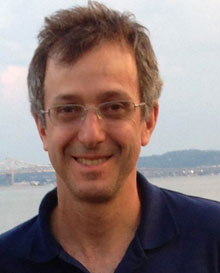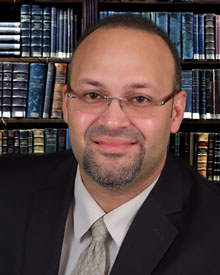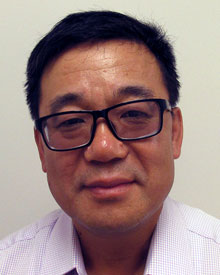New NY Bridge Replacement for the Tappan Zee Bridge
March 2, 2017
The $3.98 billion New NY Bridge is being built in order to replace the current Governor Malcolm Wilson Tappan Zee Bridge over New York’s Hudson River. Construction began in 2013, with opening targeted for 2018. The new Bridge is a state-of-the-art, twin-span replacement for the 3.1-mile Tappan Zee Bridge. It will be a visually striking, recognizable landmark, and one of the widest cable-stayed structures of its kind in the world. This project will mean less congestion for motorists, with eight general traffic lanes, breakdown/ emergency lanes, and a state-of-the-art traffic monitoring system. The new crossing will also be mass-transit ready, with space for Bus Rapid Transit as well as a design that can accommodate future light rail or commuter rail. The Bridge will feature a shared-use path for pedestrians and cyclists. In order to build the Bridge there are 14 miles of main span cables, 50 miles of foundation pillings, 300,000 cy of concrete and 220 million pounds of U.S. Steel.
LiRo provides the on-site construction quality control services as part of the design-build team, Tappan Zee Constructors, for the New NY Bridge. LiRo performs on-site and off-site quality control inspection services for pile driving, welding, reinforcing steel, concrete, structural steel, and civil disciplines. In addition, LiRo develops ITP’s (Inspection and Test Plans), quality control plans for construction activities, and manages construction materials documentation. LiRo also performs periodic off-site fabrication facility audits and, in conjunction with subcontractors, provides specialty testing and inspection services as requested by the client. This project is the largest design-build project in North America and is scheduled for completion in 2018.

Vincent Montanti has over 25 years of experience in the design and construction management industry directly managing and overseeing many high profile and complex infrastructure projects throughout the metropolitan area. Vincent was responsible for the emergency response during and after Superstorm Sandy as well as organized the dewatering of approximately 70 million gallons of water and the temporary restoration of services at the Brooklyn Battery and Queens Midtown Tunnels.

Raul Abreu has over 12 years of experience working in a wide range of transportation projects, including new and reconstructed bridges, roadway improvements and Intelligent Transportation Systems (ITS) installations. He has performed construction inspections, field investigations and construction management from foundations to superstructures. With his engineering and construction management background, Raul provides valuable support to different engineering teams.

Alan Yu has been providing fabrication, welding engineering, structural steel inspection, and quality control and management services since 1988. With certifications in multiple inspection procedures, and an educational background in welding engineering, Alan is truly an expert in this field. He heads LiRo’s in-house team of Inspectors for structural steel, and provides employee training leading to inspection certification.
The highly visible New NY Bridge attracts a lot of spectators as they enjoy watching the progress. But what some don’t appreciate is that roughly 22% of this project was built underwater. What were some of the challenges faced working below sea-level?
VM: Most of the work takes place at or above the water level including driving piles. The new bridge is founded on approximately (1,000) 300 foot pipe piles which are set and driven from work barges and templates at the surface of the river. The pile sections are spliced together on the work platforms and driven into the river bed. Each welded splice receives intensive inspection and non-destructive weld testing by the LiRo Team to verify the integrity of the welded splices. It is critical that the welds are performed correctly and verified prior to the piles being driven into the river bed. This portion of our work is the most intensive and receives a tremendous amount of scrutiny.
AY: Approximately 1,000 piles needed to be spliced through welding. One of the major challenges is how to make sure the welds are of good quality before continuing with driving the pile into water. LiRo’s structural steel inspection team performed all welding inspection during the pile driving, including visual welding inspection, ultrasonic testing and magnetic particle testing. LiRo’s team also helped the TZC conduct training and qualifying the welders for pile splices welding.
RA: Construction work at and below water level is always very challenging. Working crews need to consider water tides, currents, ice, wind, access, visibility, etc. All personnel are dependent on boats to access work locations, which takes time and coordination, and is often weather dependent.
More than 5,000 people are involved in work on the New NY Bridge. How does LiRo ensure the quality control (QC) with so many different components and working bodies of this project happening simultaneously?
VM: The 5,000 people includes onsite and off-site activities. Components for the bridge are being fabricated throughout the USA. LiRo performs QC for most of the on-site construction activities. We have assigned expert discipline leads, and experienced engineers and inspectors to partner with the contractor to ensure a quality product. As with all projects, communication is the key to coordinating the many simultaneous activities.
AY: LiRo ensures the QC by establishing a quality system for almost all construction activities, including quality plans, inspection and testing plans, and inspection checklists. LiRo also uses experienced experts and qualified inspectors for each construction field discipline.
The ‘I LIFT NY’ crane being used on the new Bridge has been denoted as a “game changer”. What warrants this celebrity reputation?
RA: The ‘I Lift NY’ has been a game changer in the project due to the tremendous lifting capabilities. It allows the contractor to assemble large bridge components off-site simultaneously at multiple controlled environment locations, then transport them by barge to the location of installation, resulting in an increase of the product quality, maximizing production and shortening the overall bridge construction duration.
When engineers design a bridge they must take many forces that will act upon the bridge into account. What are the particular strengths of this new Bridge?
VM: One strength is that it was designed to meet a 100 year design life. Material selections, special coatings systems, and construction methods are employed to ensure that this bridge will be in service without significant rehabilitation well beyond its 100th year.
AY: The solid foundation and pier supports combined with the strength of steel and concrete make the bridge stronger than most.
RA: In addition to the 100 year life span, the completed bridge foundation will include capability to be expanded to service commuter transit systems west of the Hudson River.
A large part of America’s history is its story of infrastructure. How do you feel working on the newest piece of our story?
VM: For many years I tracked the planning of the New NY Bridge with the hope that I would someday have an opportunity to be a part of the team that constructs the replacement bridge. I consider myself extremely fortunate to have this opportunity and I continue to be amazed at how much I am learning. This is a once in a career opportunity!
AY: I am very proud to be part of LiRo’s team to help build this large and historic infrastructure project. I’m happy that I can utilize my expertise and experiences here. And at same time, I have learned a lot which will certainly add to my experiences throughout this project.
RA: Being able to be part of the New NY Bridge is a dream for any engineer, especially knowing that it’s a once in a life time opportunity. I am able to be part of new construction methods that can only be seen on a project of this magnitude. Being on this project with workers all across North America has expanded my idea of what engineers are capable of designing and building.
Which iconic piece of American infrastructure do you most prefer and why (aside from this structure of course)?
VM: Grand Central Station. It has tremendous history and structural and architectural significance. I am amazed at how many people pass through the station each day utilizing regional and mass transit, pedestrian corridors, businesses, and food courts.
AY: The Freedom Tower. Not only because I was involved in the construction of the buildings at the World Trade Center and saw the building rise up from foundation to skyscrapers, but also because when you talk about it, people from every corner of the world know where it is.
RA: The Holland Tunnel. The Holland tunnel was the first of two automobile tunnels built under water. Built in the 1920s and still in use as of today makes it an impressive piece of infrastructure, very important for NY/NJ economy and a great part of American history.


